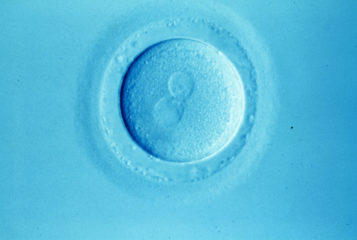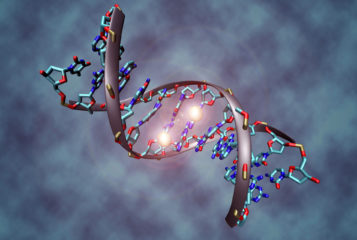| Life's Vital Link: The Astonishing Role of the Placenta
Published by Oxford University Press ISBN-10: 0199694516, ISBN-13: 978-0199694518 Buy this book from Amazon UK |
 |
I have seen a placenta… briefly. After the birth of my son, a midwife gave a routine injection to my wife to speed up the delivery of this organ. After a quick check to see if everything was present, the lump of tissue was dumped into a biohazard bag and disposed of. I gave it no more thought.
This probably describes the post-natal interaction most people have had with a placenta, if any. My first thought on picking up Life’s Vital Link was 'how can you write 223 pages for a "popular science" book on such a thing?' My fears were completely unfounded. The placenta may be the body’s shortest-lived organ, but it leads a very eventful existence. It turns out that a book about the placenta, far from being too narrow, is actually a book about evolution, genetics, immunology, embryology, behaviour and pathophysiology.
Professor YW Loke acknowledges the placenta is 'an organ that most of us rarely even think of' and then sets out the case for the placenta to be seen in the same light as the eye, heart or brain. Despite a fair amount of specialist terminology, this book is an easy and enjoyable read, with a clear writing style that makes it accessible to a wide audience.
Professor Loke starts our placental odyssey by looking at the evolution of the placenta: from egg-laying monotremes (like the platypus and echidna) to the marsupials and then eutherians (placental mammals). We then study how the placenta develops during pregnancy. Here we meet the fascinating immunological paradox of pregnancy as well as the effects of maternal, paternal, and even retroviral genes in the functioning of the placenta. In one of the most surprising arguments of the book, we are taken through how the placenta affects the development of the baby’s brain even after birth.
Throughout, Professor Loke draws our attention to the gaps in our placental knowledge. Why is pre-eclampsia lower in smokers? Why do Drosophila respond to royal jelly in the same way as bees? How can we use the placenta to provide stem cells? Professor Loke suggests possible answers and new directions.
In my opinion, the most interesting thread of the book was the comparison of cancer to the placenta. Professor Loke deftly explains why the clinical hallmarks of cancer cannot be used to distinguish cancer from trophoblast cells, the outer layer of the developing embryo that eventually becomes the placenta. Throughout, he argues that many of the genes used by cancer to spread are misused placental genes. By understanding how the placenta grows, matures and is kept in check by the mother, we may find new treatments for cancer.
The book is not perfect. This is Professor Loke’s first foray into popular science writing after a lifetime of publishing academic papers and textbooks. In places, this shows.
The narrative often bounces around, asking the reader to wait until a later chapter for explanation, or to refer to an earlier chapter for review. While useful in textbooks, this makes the narrative disjointed and harder to follow. The chapters on immunology (Professor Loke’s specialism) are a more difficult read than the rest of the book, due in part to an increase in specialist terminology. Constant referral to the glossary was useful, but disrupted my enjoyment of these chapters.
More worryingly, Yoke is guilty of making some questionable scientific statements. In the first chapter he states: 'The formation of the placenta is, without doubt, a significant turning point in human evolution'. As can be seen from chapter two, the placenta evolved long before humans. Later on, he states mitochondria 'convert oxygen into energy for the cell'. This is misleading, at best.
The final chapter is a little light on detail. I wanted to know much more about cultural attitudes to the placenta, as well as the glut of useful pharmacological products we might harvest from the organ. However, it was likely the breadth of the chapter that resulted in such superficial treatment. Exploring each of the topics in the same depth as the rest of the book would likely have doubled the page count.
These are distractions from an otherwise well-written book. Professor Loke gives us an insight into the hidden world of the placenta and it is difficult to resist his enthusiasm for the subject.
This book would make an excellent introductory text for those considering a course in embryology or immunology. While it was dense in parts, I enjoyed reading the book and it should be accessible to most interested readers. If you have wondered why the placenta (a tissue that is half-foreign) isn’t rejected like an organ transplant, or how the placenta controls both mother and baby during development, or perhaps what can go wrong if the placenta doesn’t form properly, this is the book for you.
Buy Life's Vital Link: The Astonishing Role of the Placenta from Amazon UK.





Leave a Reply
You must be logged in to post a comment.